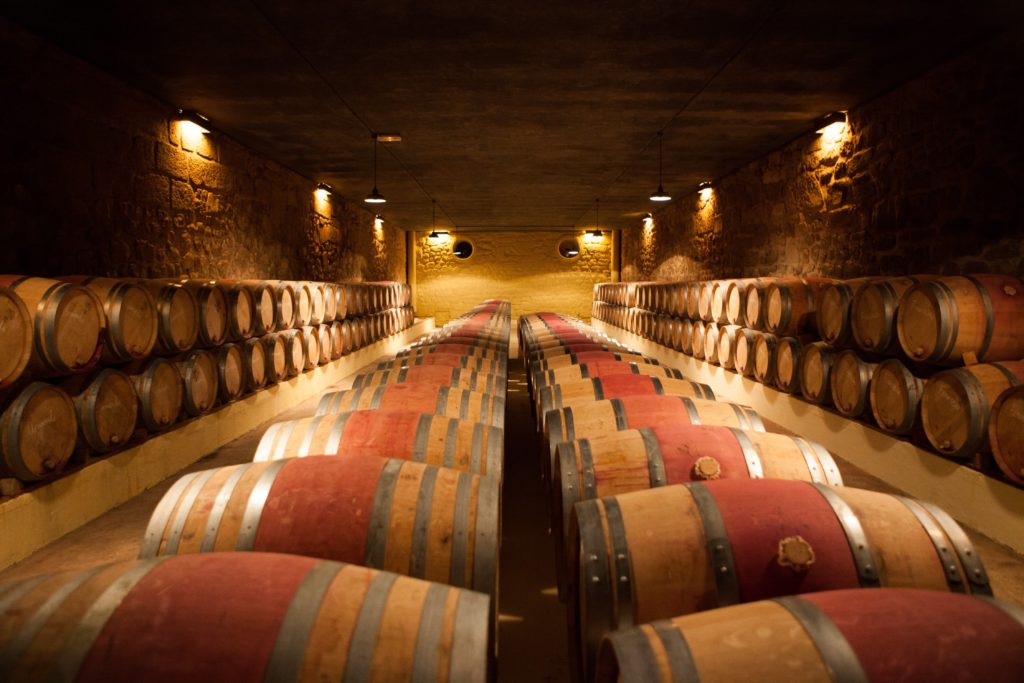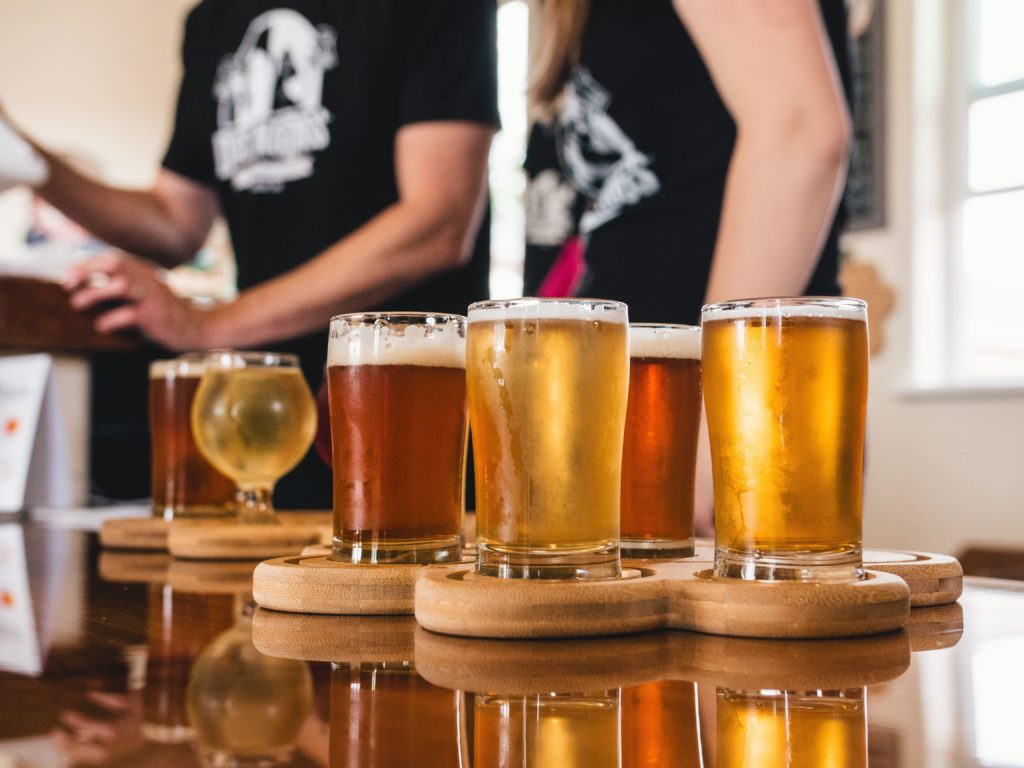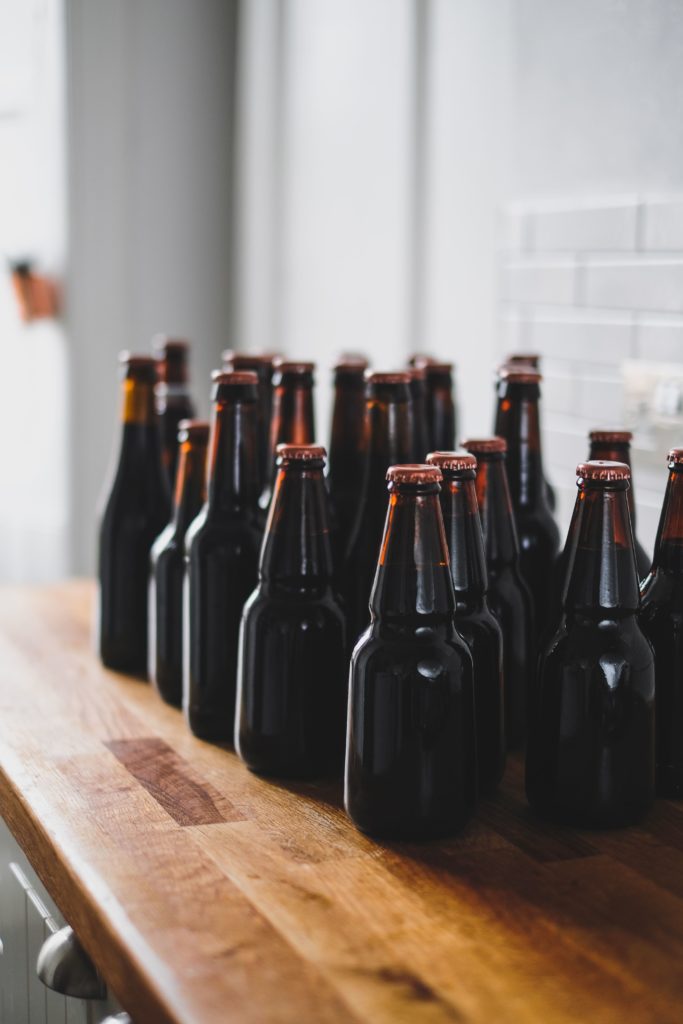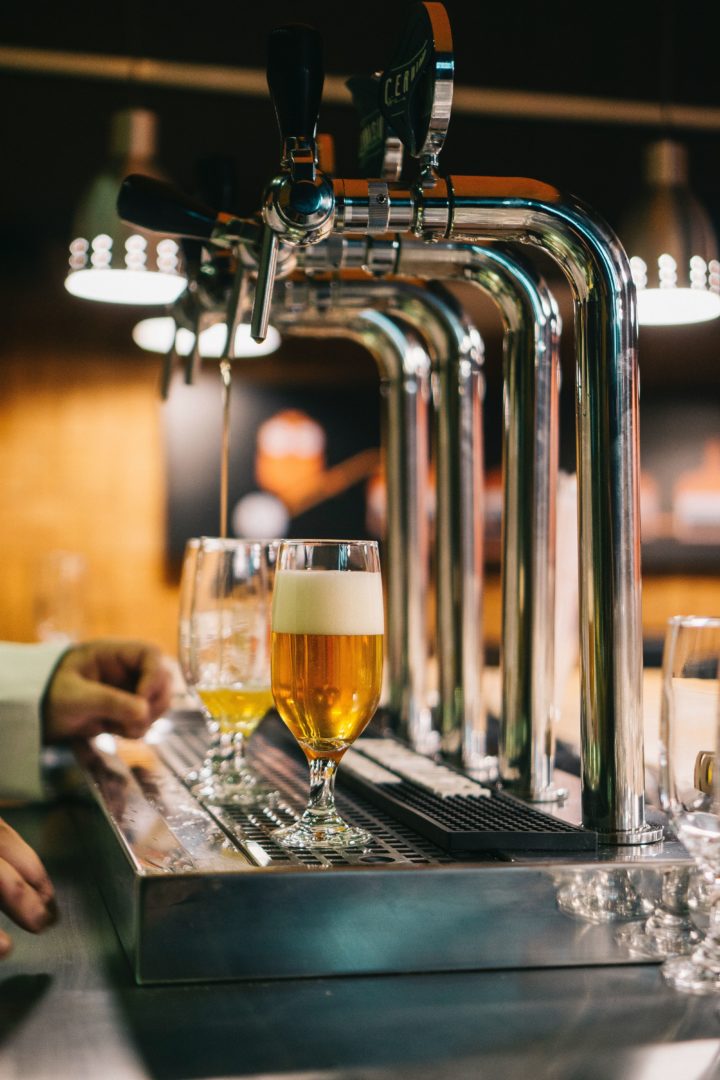When you crack open a cold beer and pay attention that satisfying hiss accompanied by the bubbling bubbles dancing to the surface, you’re experiencing the magic of carbonation. But have you ever questioned what makes beer bubbly? In this text, we’re going to dive deep into the arena of whether, is beer carbonated, exploring the technological know-how behind it, the different techniques used, and why carbonation plays a pivotal position in your beer-drinking enjoyment.


Understanding The Concept of Is Beer Carbonated:
Beer Carbonation process that infuses liquids with carbon dioxide (CO2) gas, resulting in the delightful fizziness that tingles your flavor buds. This fizzy feature isn’t always pretty much aesthetics – it drastically affects the manner a drink smells, tastes, and feels in your mouth. Carbon dioxide, a natural byproduct of fermentation, is accountable for creating those tiny bubbles that contribute to the delightful sensory experience of carbonated beverages.
Carbonation in Beer:
Yes, beer is certainly a carbonated beverage. Its effervescence is a result of the presence of carbon dioxide, which is generated throughout the fermentation system. There are primary methods by which beer receives its carbonation: natural and forced carbonation.
Natural Carbonation in Beer:
Natural carbonation is a traditional technique that has been used for hundreds of years. During fermentation, yeast converts sugars into alcohol and carbon dioxide. The CO2 produced in this process is certainly dissolved into the beer. Brewers cautiously manage the situations to make sure the right level of carbonation is carried out.
The splendor of herbal carbonation lies in its authenticity and the subtle nuances it imparts to the beer. It’s a slower procedure, but it contributes to the complexity of flavors and aromas that craft beer enthusiasts frequently are seeking for.
Forced Carbonation in Beer:
In evaluation, pressured carbonation is a modern-day technique that entails injecting carbon dioxide at once into the beer. Brewers use special tanks to carbonate the beer speedy and precisely. This approach is mainly famous in massive-scale manufacturing, wherein consistency and performance are critical.
Forced carbonation permits brewers to have greater manipulation over the carbonation degrees, making sure that each batch tastes just as supposed. It’s a bit like including seasoning in your dish – you can alter the fizziness to suit the beer’s fashion and your alternatives.
Factors Affecting Carbonation Levels:
Several elements come into play when determining the extent of carbonation in beer. Temperature, stress, fermentation time, and the form of yeast used all contribute to the final result. Even a mild variation in any of those factors can lead to differences in carbonation tiers.
Importance of Carbonation:
Carbonation isn’t always pretty much the pleasant bubbles; it is an essential component of the beer-drinking experience. The right quantity of carbonation enhances the aroma, elevates the flavors, and provides a nice sensation to the mouthfeel. Imagine the contrast between sipping on a flat, dead beer and indulging in a perfectly carbonated one with its energetic effervescence – it’s an international of distinction.


Furthermore, carbonation contributes to the formation of the beer’s head – that foamy pinnacle layer that traps aromas and adds to the visual appeal. Different beer patterns call for various degrees of carbonation to show off their specific characteristics.
Pouring and Serving Carbonated Beer:
Pouring a carbonated beer is an artwork in itself. To preserve the carbonation and fully experience the flavors and aromas, it’s important to comply with a few simple steps. Tilt the glass and pour the beer gently down the aspect, allowing it to gradually fill even minimizing agitation. This technique preserves the carbonation and prevents excessive foam.
Choosing the proper glassware is also essential. Different glass shapes affect the release of carbon dioxide and the attention of aromas. For instance, a tulip glass can help entice the aromas, improving your average tasting enjoyment.
Carbonation and Beer Styles:
Carbonation isn’t always a one-size-suits-all idea within the beer global. Various beer patterns call for unique tiers of carbonation to convey their specific characteristics. For instance, lagers may have crisper carbonation, at the same time as ales may want to characteristic a greater subdued fizziness. Stouts, recognized for their velvety textures, tend to have a lower carbonation stage to supplement their rich flavors.
Common Carbonation Myths:
Let’s debunk multiple myths surrounding carbonation and beer. First, the belief that better carbonation manner higher alcohol content material. The two are unrelated. You could have a high-alcohol beer with low carbonation and vice versa. Second, the notion that swishing your beer gets rid of the carbonation and makes it less filling. While swishing may launch some carbon dioxide, the impact on the overall carbonation level is minimal.
How to Tell If Beer is Overcarbonated or Undercarbonated:
Overcarbonation and undercarbonation are commonplace troubles that may affect your beer-drinking experience. Overcarbonation outcomes in excessive foam and gushing while you open the bottle. Undercarbonation, on the other hand, results in a flat taste and lackluster mouthfeel. Both troubles can stem from elements that include flawed fermentation, temperature manipulation, or bottling strategies. If you come upon these problems, it’s well worth troubleshooting to make sure you are getting the quality out of your brew.
Balancing Act: Achieving Perfect Carbonation:
For brewers, achieving the correct carbonation stage is a chunk of a balancing act. It requires a meticulous interest in elements, consistent practices, and a touch of experimentation. Brewers would possibly alter fermentation temperatures, yeast traces, and bottling strategies to pleasant-song the carbonation for each batch. It’s a procedure that combines technological know-how, art, and a deep understanding of the preferred beer fashion.


Additional Tips and Resources for Beer Carbonation:
- Experimentation and Patience: If you’re a homebrewer, do not be afraid to experiment with carbonation degrees. Keep precise notes approximately fermentation instances, temperatures, and yeast traces to recognize how every variable impacts carbonation.
- Carbonation Tablets: For homebrewers searching out a handy way to attain steady carbonation, carbonation tablets are available. These pre-measured capsules make it simpler to carbonate personal bottles as it should be.
- Avoid Overcarbonation: To prevent overcarbonation, ensure that you’re using the precise amount of priming sugar for the duration of bottling. Too much sugar can lead to excessive carbonation and potential bottle explosions.
- Quality Glassware Matters: Using suitable glassware enhances the carbonation revealed. Invest in a variety of glass shapes to shape one-of-a-kind beer styles and accentuate their unique attributes.
- Explore Nitrogenation: Nitrogen gas is used to create a creamy texture and pleasant, cascading bubbles in beers like stouts and porters. Nitrogenated beers have a wonderful mouthfeel as compared to historically carbonated ones.
- Online Brewing Communities: Engage with online brewing communities and boards to study from skilled brewers. You can locate valuable insights, troubleshooting suggestions, and pointers for accomplishing the correct carbonation.
- Professional Brewing Courses: If you’re serious about mastering the artwork of brewing, recollect enrolling in professional brewing guides. These courses regularly delve deep into the technological know-how of carbonation and different brewing methods.
- Books on Brewing Science: Several outstanding books discover the technology behind brewing, such as carbonation. Look for titles authored with the aid of famous brewers and scientists within the field.
- Brewery Tours and Tastings: If you’re curious about the carbonation method on a bigger scale, attending brewery excursions and tastings can provide treasured insights. Brewmasters often share their information at some point in those classes.
- Home Carbonation Systems: For those who experience experimenting, do not forget to invest in a home carbonation system. These devices let you carbonate water or different liquids to your preferred levels of fizziness.
- Attend Beer Festivals: Beer gala’s are a fantastic way to flavor a huge range of beer patterns and enjoy varying carbonation ranges firsthand. Engage with brewers at these events to examine more about their carbonation techniques.
- YouTube Tutorials: Search for YouTube tutorials on beer carbonation techniques. Many skilled homebrewers and professional brewers share their expertise through exact video demonstrations.
Conclusion:
Is Beer Carbonated? Yes, Carbonation is more than just bubbles for your beer – it is a fundamental element that affects the flavor, aroma, and common enjoyment of the beverage. Whether achieved via traditional techniques or modern strategies, the right carbonation stage can raise a beer from normal to tremendous. So, the following time you raise a glass of your favored brew, take a second to appreciate the symphony of flavors and sensations that carbonation brings to the table.
Frequently Asked Questions (FAQs):
Q1: Is beer carbonated or artificial?
Ans: Beer can be naturally and artificially carbonated. Natural carbonation occurs all through fermentation while yeast produces carbon dioxide as a byproduct. Artificial or compelled carbonation involves adding carbon dioxide immediately to the beer the usage of tanks or other strategies.
Q2: How does carbonation affect the taste of beer?
Ans: The carbonation complements the aroma, taste, and mouthfeel of the beer. It contributes to an energetic and fresh sensation, contains aromas to your nose, and balances the beauty of the malt with a slight acidity.
Q3: Can I control the carbonation degree in my homebrewed beer?
Ans: Absolutely. Controlling carbonation in homebrewed beer involves adjusting factors like fermentation time, temperature, and priming sugar quantities at some stage in bottling. It may take a few trial and error to acquire the preferred carbonation stage.
Q4: What reasons is a lager to gush when opened?


Ans: Gushing takes place whilst a beer is over-carbonated. This occurs when there’s too much-dissolved carbon dioxide in the beer. Factors like fallacious fermentation, immoderate priming sugar, or contamination can lead to gushing.
Q5: Are all beer styles similarly carbonated?
Ans: No, distinct beer styles have varying carbonation stages to match their traits. Lighter patterns like lagers often have better carbonation, while heavier patterns like stouts might also have lower carbonation to complement their flavors.
Q6: Is there a manner to fix undercarbonated beer?
Ans: If you discover your beer to be undercarbonated, you could try gently swirling the bottle to release several dissolved carbon dioxide. However, prevention is prime – ensure proper fermentation and priming sugar stages at some point of bottling.
Q7: Can I carbonate beer with something apart from carbon dioxide?
Ans: While carbon dioxide is the maximum common gas used for beer carbonation, nitrogen is used for positive styles like stouts to create a creamy texture. Nitrogenation results in smaller bubbles and an awesome mouthfeel.
Q8: Does the form of the glass affect carbonation?
Ans: Yes, the shape of the glass impacts how carbonation is launched and perceived. Different glassware shapes can enhance aromas, manipulate the discharge of carbon dioxide, and have an effect on overall consuming revel in.
Q9: What’s the satisfactory way to pour a carbonated beer?
Ans: Tilt the glass at a 45-degree perspective and pour the beer down the aspect. Gradually straighten the glass as you pour, aiming to create a mild quantity of foam. This technique preserves carbonation and minimizes immoderate foam.
Q10: Why do little beers have a frothy head while others do not?
Ans: The head on a lager is shaped by carbon dioxide bubbles growing to the surface. It’s influenced by factors like carbonation stage, glass form, and the type of beer. Beers with higher carbonation and protein content generally tend to have more massive heads.
Read More: The Ultimate Guide to Miller Lite Carbs
